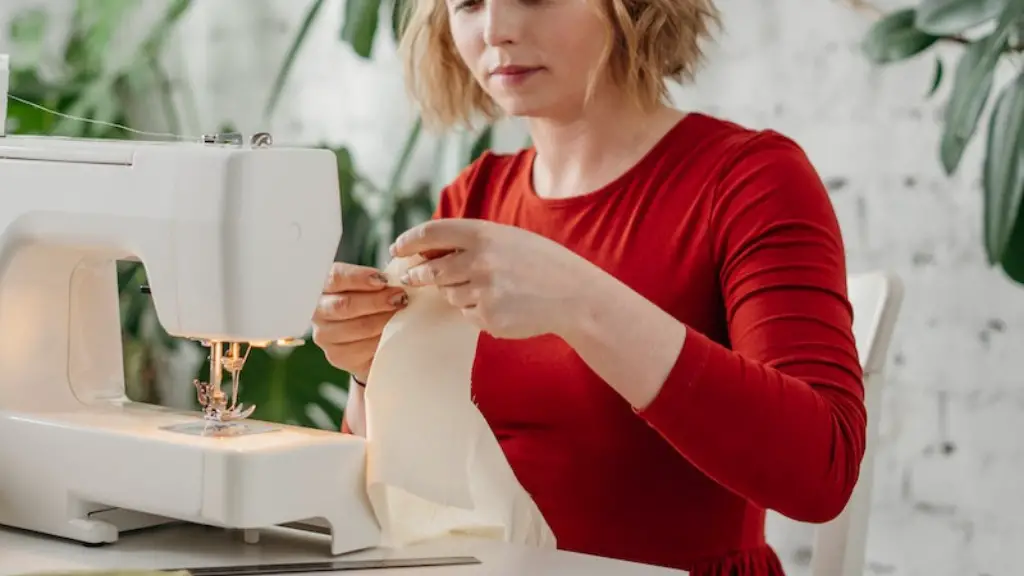The Basics of Upholstery Thread
Most people who take up sewing for the first time tend to assume that any kind of thread will suffice for their projects, when in fact the kind of thread used is as important as the fabric chosen. Upholstery thread is typically thicker than most other kinds of thread and is used primarily for heavy-duty sewing, such as upholstery, mattress covers, as well as outdoor furniture and awnings. Commonly made from nylon, polyester, cotton, or a blend of all three, upholstery thread is resistant to UV rays and mildew, which makes it ideal for outdoor use. The strength of upholstery thread also lends itself to regular sewing applications, such as clothes, curtains, and more.
Using Upholstery Thread in a Sewing Machine
Using upholstery thread in a regular sewing machine is much like using any other type of thread. You will need an extra strong needle, and a high-tension setting, in order to accommodate the thickness of the thread. It is also important to make sure your machine is properly threaded, as the thread is thicker than usual and can create a jam if not loaded correctly. Then, you’re ready to start sewing—just as you would with any other kind of thread. Though it may take a few adjustments and some practice, upholstery thread is no different than any other thread in terms of use and application.
Expert Insight
According to sewing expert and author Claire Shaeffer, the use of upholstery thread in a regular sewing machine depends on the type of thread and the fabric being used. While some fabrics may work perfectly, other fabrics, such as vinyl or laminated cotton, are too thick and may require a heavy-duty sewing machine for the job. Shaeffer also suggests using a larger needle, such as a 100/16 or 90/14, when working with upholstery thread. A smaller needle can cause the thread to break, and can also create problems with the tension setting. Finally, Shaeffer advises to test the thread on a piece of scrap fabric before beginning the project.
The Benefits of Upholstery Thread on a Regular Sewing Machine
While upholstery thread can be difficult to work with, the benefits of choosing it outweigh any potential negatives. Because upholstery thread is usually thicker and more durable than other threads, it can create a much stronger stitch than conventional threads. This means the seams will be much more resistant to pressure, wear, and tear. This makes upholstery thread ideal for any project that requires strength and resistance, such as quilting, hems, and seams that need to bear a lot of weight. In addition, the seams will be less likely to unravel, even after extensive use.
Conclusion
Using upholstery thread in a regular sewing machine can be a bit challenging, but the rewards are great. Not only does upholstery thread provide a much stronger stitch, but it also helps to ensure that the seams are resilient and long-lasting. With a high-tension setting and a strong needle, upholstery thread can be used safely and successfully in any sewing machine. So if you’re looking for an extra durable thread, upholstery thread might be the perfect choice.
Other Options
While upholstery thread is a great choice for sewing projects, there are some other options that might be more suitable, depending on the project you’re working on. Heavy duty threads, such as leather thread and canvas thread, are suitable for thicker fabrics, while lighter fid stitches can be created using a finer thread, such as cotton thread. Ultimately, the choice of thread will come down to the type of fabric and the kind of stitch you are hoping to create.
Care and Maintenance
When using upholstery thread in a regular sewing machine, it is important to be aware that the thread might be a bit more difficult to handle than conventional threads. The thread is thicker, and as such, it will put more strain on the needle and thread spool, so it is important to check and re-tension the machine more often. Additionally, take care when storing upholstery thread to prevent breakage, as the thread is typically much more brittle than other threads.
Stencils, Letters, and Other Embellishments
Upholstery thread is a great choice for adding more than just decorative stitching to a project. A thicker thread can be used to stitch letters and words, as well as elaborate motifs, such as stars and hearts. The process is simple; all you need is a template, a needle, and upholstery thread, and you can create beautiful, personalized pieces.
Pros and Cons of Upholstery Thread
The use of upholstery thread in a regular sewing machine can have both advantages and disadvantages. On the one hand, upholstery thread is significantly stronger than other threads, making it ideal for projects that require extra durability. On the other hand, upholstery thread requires a specific type of needle and a high tension setting, and is more brittle than other threads. It is also worth noting that it can be difficult to work with, as the thicker thread can jam or tangle the machine more easily. All of this needs to be taken into consideration before choosing upholstery thread.
Tips and Tricks
When using upholstery thread, it is important to use the correct type of needle and thread. A larger-sized needle will make it easier to thread the needle and create a stronger stitch. Additionally, it is important to make sure your machine is set to the correct tension setting. Finally, make sure to check the thread often to ensure that it is not tangled or frayed.


